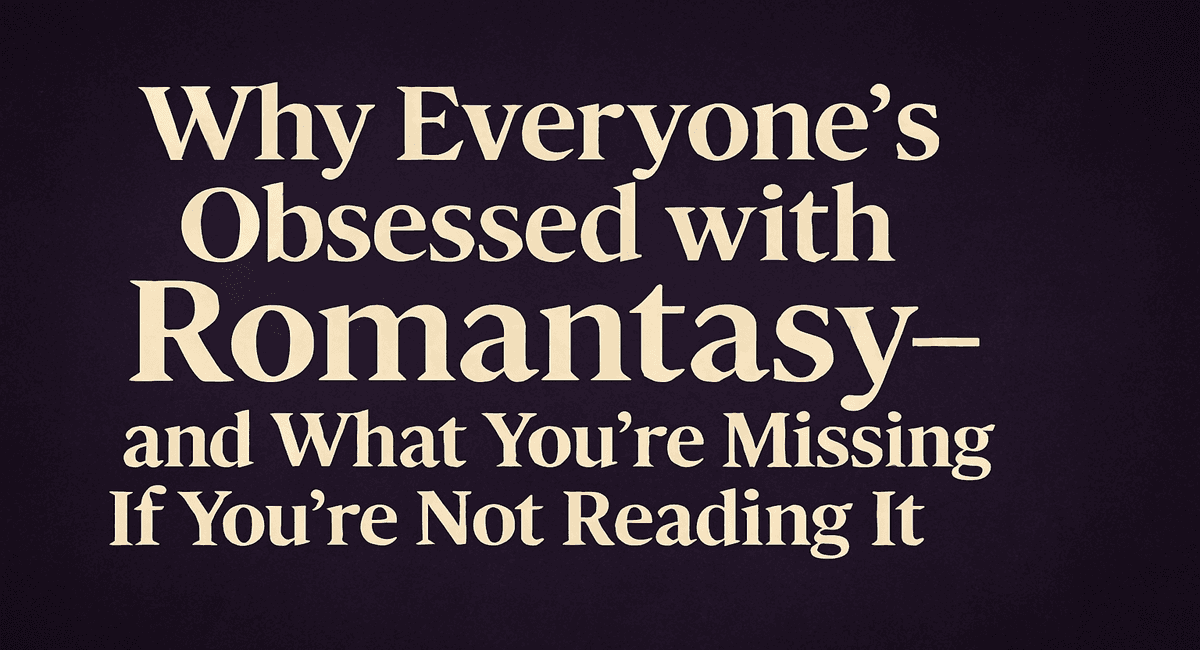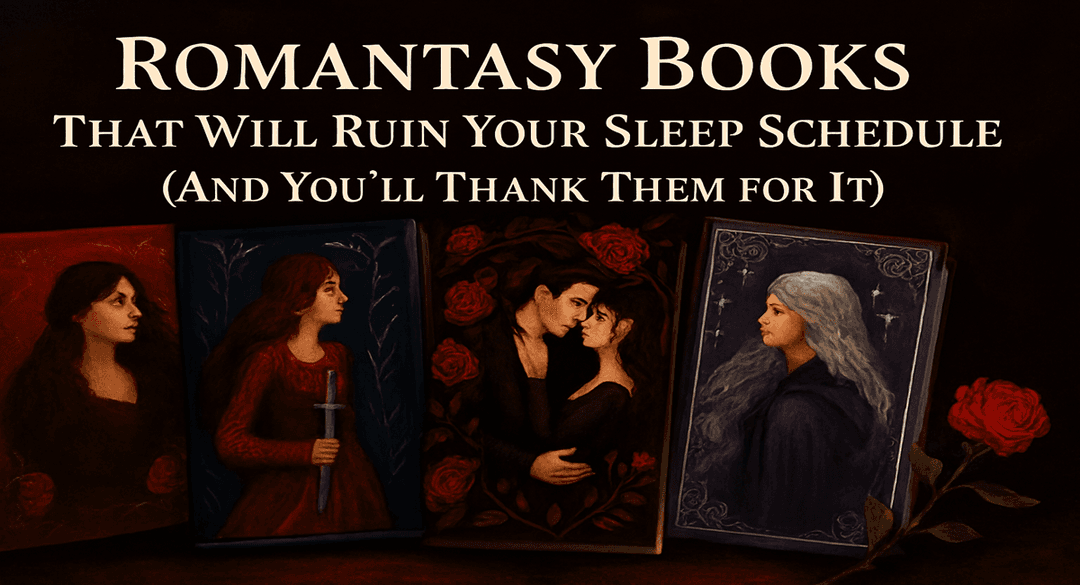What is Romantasy?
Romantasy, a portmanteau of "romance" and "fantasy," represents one of the fastest-growing genres in contemporary literature. This captivating blend combines the emotional depth and relationship dynamics of romance novels with the world-building, magic systems, and adventure elements characteristic of fantasy fiction. Unlike traditional fantasy where romance serves as a subplot, romantasy places romantic relationships at the heart of the narrative while maintaining rich fantastical elements.
The genre has exploded in popularity, particularly among readers aged 18-35, who crave stories that offer both escapist fantasy and emotionally satisfying romantic relationships. Social media platforms like BookTok and Instagram have played pivotal roles in amplifying romantasy titles, creating viral reading communities and driving unprecedented sales figures.
Key Elements of Romantasy
Romance-Centric Plot Structure
Romantasy novels prioritize romantic relationships as the primary narrative driver. The romantic arc typically follows established patterns: initial attraction, conflict or obstacles, character growth, and resolution. However, these relationships unfold against fantastical backdrops that add layers of complexity and stakes beyond typical contemporary romance.
Fantasy World-Building
Authors create immersive fictional worlds complete with unique magic systems, mythical creatures, different realms, and alternative societies. These settings aren't merely decorative but integral to character development and plot progression. The fantasy elements often mirror or amplify the emotional journey of the romantic leads.
Character Archetypes
Romantasy features distinctive character types that have become genre staples. The morally gray love interest, often possessing supernatural powers or a dark past, proves particularly popular. Heroines frequently discover hidden magical abilities or royal lineage. Supporting characters include wise mentors, loyal friends, and formidable antagonists who challenge both the romantic and fantastical elements of the story.
Emotional Intensity
The genre emphasizes deep emotional connections, often exploring themes of healing, self-discovery, and empowerment through romantic relationships. The fantasy setting allows for heightened drama and stakes that wouldn't be possible in contemporary romance.
Popular Romantasy Subgenres
Fae Romance
Stories featuring faeries, courts, and otherworldly beings have dominated romantasy shelves. These tales often explore themes of immortality, magical contracts, and the tension between human and supernatural worlds.
Vampire Romance
A classic that has evolved significantly, modern vampire romantasy moves beyond traditional Gothic elements to incorporate contemporary sensibilities and diverse mythologies.
Witch Romance
Stories centered around magic practitioners, covens, and spellcasting have gained tremendous popularity, often combining elements of mystery and supernatural suspense.
Dragon Romance
Shape-shifting dragons and dragon riders create narratives that blend epic fantasy adventure with intimate romantic development.
Dark Academia Fantasy Romance
Set in magical schools or universities, these stories combine intellectual pursuits with romantic tension and often feature secret societies or hidden magical curriculums.
The Rise of Romantasy in Popular Culture
The genre's popularity surge can be traced to several cultural factors. Readers increasingly seek escapist content that provides emotional satisfaction while exploring complex themes. The rise of social media book communities has created unprecedented visibility for romantasy titles, with readers sharing recommendations, fan art, and detailed reviews.
Publishing houses have responded by expanding their romantasy offerings, recognizing the genre's commercial viability. Many traditionally published fantasy authors have incorporated stronger romantic elements into their work, while romance authors have embraced fantasy settings and supernatural elements.
Impact on Reading Communities
Romantasy has fostered vibrant, inclusive reading communities that celebrate diverse voices and perspectives. These communities actively promote books by authors from marginalized backgrounds and advocate for representation in fantasy romance. The genre has also encouraged readers to engage more deeply with books through fan fiction, art, and extensive online discussions.
Book clubs dedicated to romantasy have proliferated, both online and in physical spaces. These communities often extend beyond reading to include themed events, author interactions, and charity initiatives.
Notable Authors and Series
The genre boasts numerous bestselling authors who have shaped its development and popularity. Many series have achieved cult-like followings, with readers eagerly anticipating each new release. These works often feature complex multi-book arcs that allow for deep character development and intricate world-building.
The success of romantasy has also opened doors for new authors, particularly those from diverse backgrounds who bring fresh perspectives to traditional fantasy tropes and romantic conventions.
Writing Elements That Define Success
Dual Plot Development
Successful romantasy novels balance romantic and fantasy elements seamlessly. Neither aspect overwhelms the other, and both contribute meaningfully to character growth and story resolution.
Character Chemistry
The romantic leads must demonstrate genuine connection and chemistry that feels authentic within the fantastical context. This often involves shared challenges, complementary abilities, or conflicts that force characters to confront their deepest fears and desires.
Magic System Integration
Magic systems in romantasy often reflect or enhance romantic themes. Powers might be connected to emotions, require partnerships to function effectively, or create unique obstacles for romantic relationships.
Pacing and Tension
Effective romantasy maintains tension across both romantic and fantasy plotlines. This might involve separating love interests through magical means, creating conflicts between duty and desire, or using fantasy elements to create seemingly insurmountable obstacles.
The Future of Romantasy
The genre continues evolving, with authors exploring new mythologies, expanding representation, and pushing creative boundaries. Emerging trends include science fantasy hybrids, contemporary fantasy romance, and stories that deconstruct traditional fantasy tropes while maintaining romantic appeal.
Digital platforms have made romantasy more accessible than ever, with audiobooks and e-books allowing readers to discover new authors and series easily. The genre's strong social media presence suggests continued growth and evolution.
Conclusion
Romantasy represents more than a simple genre blend; it reflects readers' desires for stories that combine emotional depth with imaginative escapism. By successfully merging romance and fantasy elements, the genre offers unique storytelling possibilities that resonate with diverse audiences seeking both entertainment and emotional satisfaction.
As the genre continues maturing, it promises to deliver increasingly sophisticated narratives that challenge conventions while maintaining the core elements that have made romantasy such a beloved reading experience. For readers seeking magical worlds filled with passionate relationships and unforgettable characters, romantasy offers an ever-expanding universe of possibilities.


